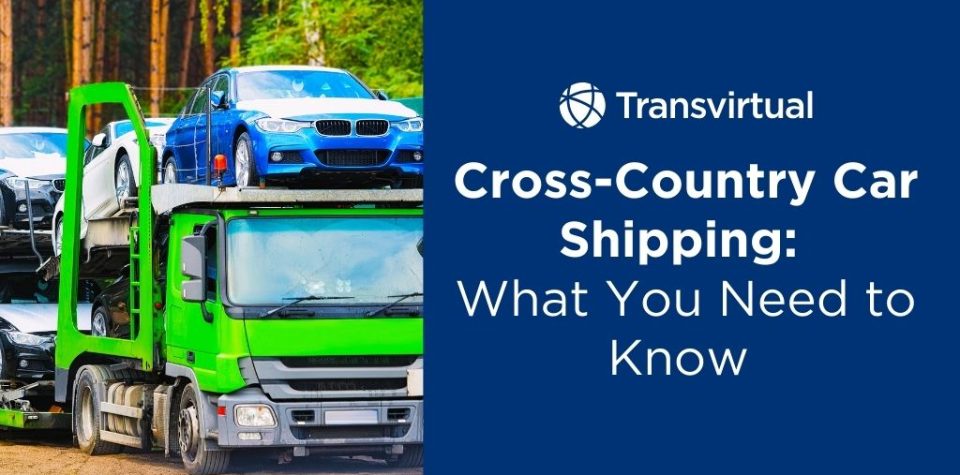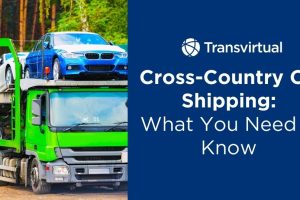Table of Contents
Shipping a car across Australia—whether for work, family, or a vehicle purchase—can feel overwhelming with the variety of vehicle shipping options and factors involved. Common concerns include choosing the right transport method, avoiding hidden costs, and ensuring the vehicle’s safety during the journey.
This guide will help you navigate these decisions with ease, covering the key factors like transport options (open vs. enclosed), delivery methods (door-to-door or terminal-to-terminal), and how to plan for cost variations. With the right information, you can avoid unnecessary stress and ensure your vehicle reaches its destination safely and efficiently.
Preparing for Interstate Car Transport
When preparing for interstate car transport, a little preparation can go a long way in ensuring a smooth and hassle-free experience. Here are some essential tips to help you get ready:
-
Gather Necessary Documents: Make sure you have all the required paperwork, including the car’s registration, insurance, and any relevant import permits. Having these documents handy will streamline the process and avoid any last-minute hiccups.
-
Clean and Inspect Your Vehicle: Give your car a thorough wash and inspect it for any existing damage or issues. Documenting the car’s condition with photos can be helpful for reference upon delivery.
-
Remove Personal Belongings: Clear out any personal items or accessories from the vehicle. Not only does this reduce the risk of loss or damage, but it also ensures compliance with transport regulations.
-
Check Fuel Levels: Ensure the fuel tank is at the recommended level for transport, usually around a quarter full. This is sufficient for loading and unloading without adding unnecessary weight.
-
Provide Accurate Delivery Details: Double-check the pickup and delivery suburbs to ensure the car transport company has precise information. Accurate details help in planning a cost-effective and efficient transport process.
By following these steps, you can make the interstate car transport process smoother and more efficient.
Choosing the Right Car Transport Company
Selecting the right car transport company is crucial for a stress-free experience. Here are some factors to consider when making your choice:
-
Experience Matters: Look for a company with extensive experience in interstate car transport services. A seasoned provider will have the expertise to handle any challenges that may arise.
-
Check Reputation: Research the company’s reputation online. Reading reviews from previous customers can provide valuable insights into their reliability and service quality.
-
Insurance and Liability Coverage: Ensure the company has comprehensive insurance and liability coverage to protect your vehicle during transport. This is especially important for high-value or vintage cars.
-
Compare Quotes: Obtain a car transport quote from multiple companies to find the best value for your money. Be wary of quotes that seem too good to be true, as they may come with hidden costs.
-
Service Options: Check if the company offers door-to-door delivery and can accommodate your specific delivery requirements. This added convenience can be worth the extra cost for many customers.
By considering these factors, you can choose a car transport company that meets your needs and provides peace of mind.
Preparing Your Vehicle for Transport
Properly preparing your vehicle for transport is essential to ensure its safety and security during the journey. Here are some steps to follow:
-
Wash and Clean the Vehicle: A clean car makes it easier to identify any existing damage or issues. Take photos of the vehicle from various angles for documentation.
-
Remove Loose Items: Take out any loose items or accessories that could cause damage during transport. This includes items like GPS units, toll tags, and custom spoilers.
-
Check Tire Pressure: Ensure the tires are inflated to the recommended pressure. Properly inflated tires help prevent damage during loading and unloading.
-
Disable Alarms: Disable any alarms or immobilizers to prevent them from triggering during transport. This avoids unnecessary complications for the transport company.
-
Provide Vehicle Information: Give the transport company all necessary information about the vehicle, including its make, model, and any special requirements. This helps them plan for a safe and efficient transport.
Following these steps will help ensure your vehicle arrives at its destination in the same condition it was in when it left.
How Much Does It Cost to Use Interstate Car Transport Services?
The cost to transport cars across Australia can vary significantly depending on several factors such as distance, vehicle type, and service options. For local car transport, prices range from $250 to $400, while interstate relocations typically cost between $800 and $2,300. The factors that impact these prices include the distance to be covered, the type of vehicle, whether the service is door-to-door or depot-to-depot, and whether the vehicle is operational.
For example, transporting a car from Sydney to Melbourne can take between 2 to 4 days, and from Melbourne to Perth, it can take 6 to 9 days. Additionally, choosing premium services like enclosed transport or expedited delivery will increase the cost.
1. Carrier Transport Options
Choosing the right vehicle transport method is one of the first and most important decisions. Many people worry about balancing affordability with ensuring their car arrives in pristine condition.
Luckily, there are two main options that can cater to your needs:
-
Open Transport: This is the standard option for most vehicle shipments and is used for nearly 90% of cars transported worldwide. Open transport carriers can handle multiple vehicles at once, making this a cost-effective choice. However, your car will be exposed to weather and road debris, which may be a concern for high-value or vintage vehicles.
-
Enclosed Transport: If protecting your vehicle from external elements is a priority, enclosed carriers are the better choice. These carriers offer added peace of mind, especially for classic or luxury cars, but they come with a higher price tag—typically 30% to 60% more than open transport.
Deciding between these options often comes down to your vehicle’s value and your tolerance for risk. That said, most people opt for open transport because complications and incidents rarely occur and you have the option to purchase additional insurance coverage for the journey.
2. Delivery Methods
After selecting a transport method, you’ll need to decide how your car will be picked up and delivered. This choice often depends on convenience and cost considerations.
-
Terminal-to-Terminal Delivery: This option requires you to drop off and pick up your car at designated terminals. While it’s generally more affordable, it can be inconvenient if the terminals are far from your location. Many customers also find coordinating schedules with terminal hours challenging.
-
Door-to-Door Delivery: This method offers unparalleled convenience. A driver picks up your car from your home and delivers it to your desired destination. Though more expensive, it’s a hassle-free choice, especially if you’re dealing with tight timelines or remote locations.
Customers often express satisfaction when their car arrived safely and on time.
The main pain point here is balancing cost with the ease of service, as terminal-to-terminal delivery may save you money but require more effort.
3. Cost Factors
Unexpected shipping costs are a common frustration, but understanding the primary cost factors can help you plan better.
-
Insurance Coverage: Most carriers include basic insurance, but it’s crucial to confirm what’s covered. If your car is valuable, you may need to purchase additional coverage for peace of mind.
-
Seasonal Pricing: Just like airfare, car shipping prices fluctuate based on demand. For example, costs tend to spike during the winter as snowbirds migrate to warmer climates.
-
Vehicle Size and Type: Larger vehicles, such as SUVs or trucks, generally cost more due to the extra space and fuel required. For instance, a sedan might cost around $1.00 to $1.50 per kilometre, while an SUV or larger vehicle could push that to $1.50 to $2.00 per kilometre.
-
Distance: Longer trips usually offer a lower cost per kilometre, but the overall price increases. For example, for a 300 km journey, the cost could be around $1.20 per kilometre, while a 2,000 km journey might lower the cost to approximately $0.80 to $1.00 per kilometre.
By understanding these factors, you can avoid sticker shock and make smarter decisions about your shipping options. Just a quick note from customers often highlights the importance of understanding these cost factors.
How Technology Simplifies Vehicle Logistics
Many people worry about the logistics of car shipping—comparing carrier rates, ensuring timely delivery, and tracking their vehicle during transit. Thankfully, modern technology simplifies these challenges.
-
Rate Cards: Automated pricing tools provide upfront quotes based on your vehicle type, destination, and service preferences, helping you avoid hidden fees.
-
Transportation Management Systems (TMS): These platforms streamline carrier selection, allowing you to find the most efficient option for your shipment.
-
Route Optimisation: Advanced algorithms calculate the best routes, reducing fuel costs and travel time, which benefits both carriers and customers.
-
Real-Time Tracking: Knowing exactly where your vehicle is during transit offers peace of mind and eliminates the stress of uncertainty.
-
Load Management Tools: Planning modules ensure carriers make the best use of space and resources, resulting in timely and efficient deliveries.
By leveraging these tools, you can save time and money while enjoying a more transparent and predictable shipping experience.
Insurance and Liability
Understanding insurance and liability is crucial when it comes to interstate car transport. Here are some key points to keep in mind:
-
Comprehensive Insurance Coverage: Verify that the transport company has comprehensive insurance coverage to protect your vehicle during transport. This coverage should include damage, theft, and other potential risks.
-
Understand Liability Policies: Familiarize yourself with the company’s liability policy and what is covered in case of damage or loss. Knowing this information upfront can save you from unexpected surprises.
-
Additional Insurance: Consider purchasing additional insurance coverage for extra peace of mind, especially if your vehicle is of high value or sentimental importance.
-
Claims Process: Ensure you understand the transport company’s claims process. Know what steps to take and what documentation is required in case you need to file a claim.
-
Document Vehicle Condition: Keep a detailed record of your vehicle’s condition before and after transport. This documentation is essential for any potential claims and ensures any damage is properly addressed.
By paying attention to these insurance and liability considerations, you can protect your vehicle and ensure a smooth transport experience.
Streamline and Simplify the Car Shipping Process with a Car Transport Quote
Shipping a car cross-country may seem daunting, but understanding your options and preparing for common pain points can make the process much smoother. Whether you prioritise cost, convenience, or protection, there’s a solution to fit your needs. Best of all, with the help of modern technology, you can ensure a stress-free experience and get your vehicle where it needs to be safely and efficiently.
Make your car shipping experience seamless with Transvirtual’s powerful solutions—rate cards, TMS, route optimisation, real-time tracking, and load management. Need a reliable, efficient, and tech-driven way to ship your vehicle? Contact us now to get started.


